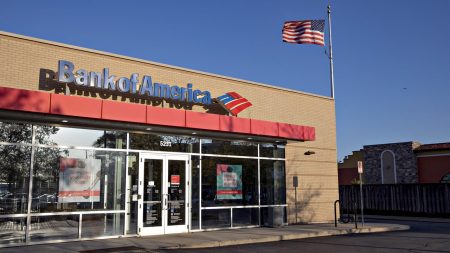Rowan Jordan/Getty Images
Our writers and editors used an in-house natural language generation platform to assist with portions of this article, allowing them to focus on adding information that is uniquely helpful. The article was reviewed, fact-checked and edited by our editorial staff prior to publication.
Most homeowners know the value of having a robust home insurance policy. Not having one can leave you vulnerable to out-of-pocket costs in the event of a disaster. But not everyone knows how to get homeowners insurance after a lapse in coverage. A homeowners insurance lapse can happen for a number of reasons, from a missed payment to an insurer becoming insolvent, but they should generally be addressed quickly so you are not left without coverage. Bankrate created this guide to help you understand what happens if your home insurance lapses and how you can be prepared if it happens to you.
What happens if my homeowners insurance policy lapses?
A lapse in homeowners insurance can create both immediate and long-term financial damage. The immediate result of a policy lapse is a loss in coverage, which can quickly snowball into other issues. Below are some of the consequences homeowners may anticipate when a policy lapses.
You would have to pay for losses out of pocket
A lapse in your coverage means that you are uninsured. It could be days or weeks, but the risk is the same; if something happens during the lapse period, you will not have any financial protection from homeowners insurance and will have to pay the expenses and losses out of pocket.
Your premiums may increase
If you discover your insurance lapse within a few days of it occurring, your insurance company may be able to reinstate your policy. A reinstatement means your policy continues as is (without factoring the lapse) after you make your payment. However, this is usually an exception.
In most cases, you must pay any past-due amount and then start a new policy with a new effective date. Even a small lapse could lead to higher home insurance premiums since your carrier may find you riskier to insure due to the time you went without coverage. Any rate change — particularly an increase — that would have taken effect at the next policy renewal will usually become effective on your new policy start date.
You may have trouble finding coverage with another carrier
Depending on the circumstances, you may find difficulty securing new coverage from other carriers after a policy lapse. Even the insurance company that insured you before your lapse may not offer new coverage depending on its underwriting guidelines. If you experienced a loss during the lapse, you may have to show documentation that the home is repaired in order to secure coverage. One of the questions most insurance applications ask is if you have had a home insurance lapse in the past. If you did, you might be denied coverage.
Your mortgage lender will buy home insurance coverage
Maintaining an active homeowners insurance policy is a typical mortgage requirement from your lender. If your policy lapses, the insurance company is required to let the lender know your policy is no longer active. Typically, the mortgage company will give you a time frame to secure a new policy and provide proof of coverage. If you do not acquire a policy, the mortgage company will likely initiate a force-placed insurance policy to mitigate the risk of your home experiencing a loss while uninsured.
Force-placed insurance typically will not be the cheapest homeowners insurance policy available and could be even more expensive than your previous one. The coverage will also likely be more limited and often does not include personal liability coverage. If a homeowner does not pay the forced-placed insurance premium, they risk having their home placed in foreclosure.
You will not be able to file a claim for damage
Without home insurance coverage, you’d be responsible for repairing or replacing losses you experience out of pocket. Attempting to file a property insurance claim retroactively for a loss that occurred while you had a lapse in coverage is a felony that is punishable by jail time and significant financial penalties
Reasons for a home insurance lapse
If you do not pay your insurance bill after a certain amount of time, your home insurance will be canceled, creating a lapse in coverage. However, other situations can cause a lapse in home insurance too, including:
- You misrepresented yourself on your application: For instance, if you omitted that you own a restricted dog breed or that you do not plan on living in the home full-time, your insurance company has the right to cancel your policy mid-term.
- You are considered high-risk: Your carrier may decide that too many claims or late insurance payments make you too high-risk to insure.
- A negative home report or deferred maintenance: If your roof needs repair or replacement and you have been avoiding it, or the initial home inspection showed that the electrical wiring is defective or outdated, but has not been replaced, an insurance company may decide to cancel your coverage.
- Insurance fraud: If at any point a policyholder is found to have caused intentional damage in order to submit a fraudulent claim or takes any action that goes against the insurance policy contract, insurance companies have the right to cancel the policy. This includes falsified information on your policy application.
- Insurance company withdraws from the state: An insurance company may re-evaluate its risk model and decide that a certain area isn’t profitable enough due to the risk of future catastrophic losses, like from the wildfires in California or hurricanes in Florida and Louisiana. When this happens, providers can choose to stop writing new business contracts for certain types of risk or withdraw from the state. It may also be the case that a company voluntarily withdraws from a particular market. In either scenario, a home insurance policy nonrenewal would occur and the homeowner would need to secure other coverage beforehand to avoid a lapse. At least 30 days advance notice is required in most states for nonrenewals and mid-term cancellations.
- Insurance company goes insolvent: If your insurance company is declared insolvent, meaning it cannot pay its debts or rehabilitate itself, a policy lapse could also occur. Your policy will usually be transferred to another insurance company in the process, but this isn’t guaranteed. It’s important to ensure you’ll maintain coverage either through a transfer or by securing a new policy on your own to avoid a policy lapse from appearing on your insurance history.
Any of these scenarios may cause you to lose home insurance coverage. Finding an alternative quickly before your insurance lapses and you end up without coverage is vital. There may be a short homeowners insurance grace period before coverage is canceled if the premium payment is not received on time, but if you receive a warning letter for nonpayment, you should act fast to avoid a lapse in coverage.
How do I get homeowners insurance coverage after a lapse?
Getting homeowners insurance coverage after a lapse is crucial if you want to have financial protection against covered perils. Usually, the best course of action is to contact your insurance company immediately to see if your policy qualifies for reinstatement so your lapse can be rescinded. However, this option isn’t always possible, especially if the lapse was for more than a few days, if the property has experienced any unrepaired damage or if your policy has previously been reinstated to avoid a prior lapse.
Here are the steps to take to get homeowners insurance coverage after a lapse:
- Gather quotes. Get several quotes from different carriers to determine which companies will insure you after a lapse. Be open about the lapse so you don’t waste time getting quotes from carriers who will not insure a homeowner with a coverage lapse.
- Compare quotes. After gathering the quotes with the same coverage options, limits and deductibles, compare pricing. Once you narrow down your company choices, research customer reviews and other factors that you want in a company to decide which company is best for your needs.
- Apply for coverage. Complete the company’s application, including setting the effective date as soon as possible so you can get coverage in place.
- Confirm payment options. With a lapse on your record, the insurance company may want a down payment or allow the policy to be billed to your mortgage company. If the carrier invoices the lender, verify coverage is already effective versus when the lender makes the payment.
- Notify your lender. Once coverage is in place, contact your lender and provide the new policy details to prevent or stop the company’s force-placed insurance on your home. The mortgage company may require proof of insurance, which you can send or have the carrier submit on your behalf.
Ways to save on homeowners insurance coverage
If you are struggling with the cost of your home insurance, finding ways to save on your premium could bring your budget some relief. Consider the following ideas to lower your rates:
- Bundling: Purchasing auto and home insurance from the same carrier often nets a significant discount.
- Switch carriers: Periodically compare home insurance rates from a handful of carriers. You may find it is cheaper to switch companies to pay less for coverage.
- Raise your deductible: If you’re comfortable paying a higher deductible out of pocket, you could raise the deductible to lower your rates. The key is to raise it enough to save on your premiums while still being able to pay out the amount in case of a claim. Homeowners in coastal states prone to hurricanes and tornado alley states may be subject to a separate deductible for windstorm or wind/hail damage.
- Adjust your coverage limits: While a homeowners insurance policy generally has coverage amounts dependent on your dwelling coverage amount, some coverage may be adjusted. For example, if your personal property coverage is currently 70 percent of your dwelling coverage amount, you may be able to reduce coverage to 50 percent to save on premium costs. Another area where you can reduce coverage is “other structures” if you don’t have any external structures on your property, such as a swimming pool, gazebo, shed or detached garage. Talk with your insurer about what coverage can be adjusted and what coverage you need.
- Add a security system: Adding cameras, door sensors, deadbolt locks, smoke detectors or a water leak detector could help you save on your home insurance.
Frequently asked questions
-
Having your homeowners insurance canceled can be stressful. The insurer should send a letter explaining why your insurance is being dropped with an effective date. You will need to find a new home insurance policy to replace the canceled one so it’s important to start this process as soon as possible to avoid a coverage lapse, leaving you financially exposed to risks such as fire or theft. Some insurers may offer a grace period to accommodate a late payment, but you should not count on this.
-
The average cost of home insurance in the U.S. is $2,270 a year for $300,000 in dwelling coverage. There are numerous factors that play a role in determining rates, however, and each insurance company has its own method of weighing those factors, so you are likely to have a rate that is different from the average. You may pay less, for example, if you have a favorable credit rating and rarely, if ever, file a claim against your policy. Other factors can include the amount and type of coverage you purchase, your location and even how close your house is to the local fire department. Asking an agent about discounts can potentially help you save money on your policy.
-
It’s impossible to pinpoint a single carrier as the best home insurance company for all homeowners since every homeowner has different needs. Instead, consider what’s important to you, whether it’s affordable premiums, financial strength or dependable customer service. For example, USAA and Allstate tied for Bankrate’s Best Home Insurance Company Overall award. However, Lemonade won the award for Best Digital Home Insurance Company. So if you are a policyholder who values digital service options over all else, you may prefer Lemonade over an insurer like Allstate.
-
When a homeowner has a lapse of insurance coverage, this means they have a period of time where either their home went uninsured or they no longer needed a homeowners policy. A lapse can be unintentional, such as having your policy canceled due to nonpayment, or intentional, such as a homeowner selling their old home, but not yet purchasing a new one. In cases where there is a lapse in coverage due to a nonrenewal, nonpayment cancellation or a policy cancellation for adverse action, premiums can increase due to the financial risk involved with going uninsured. However, a mid-term policy cancellation could also occur due to your insurer being declared insolvent. Insurers are required by state regulations to notify policyholders in writing for nonrenewals and cancellations, and most states require a minimum 30 days’ notice for a mid-term policy cancellation or nonrenewal.
-
An insurance coverage lapse occurs after the grace period an insurance company provides expires. Depending on the insurance provider, policyholders may have a payment grace period where their payment is past due but the policy has not been canceled yet. This time frame is typically 30 days depending on the state regulations and individual insurer. As long as the policyholder makes the payment before the cancellation date of the policy, there won’t be a lapse in coverage.
Read the full article here












